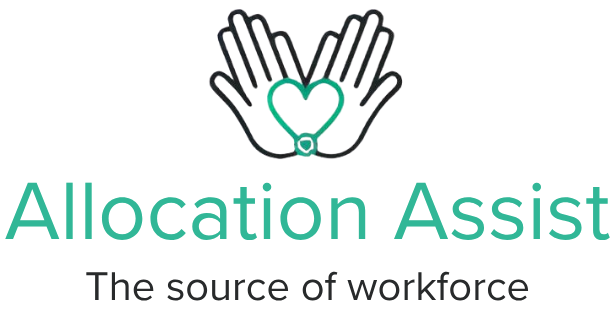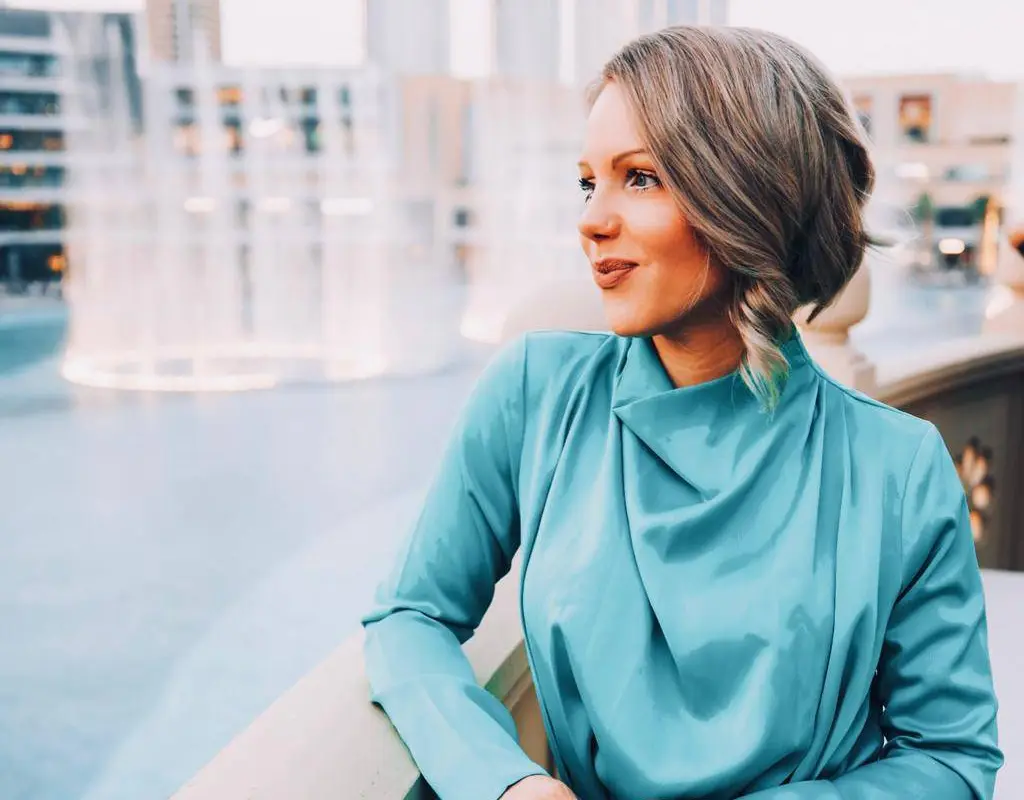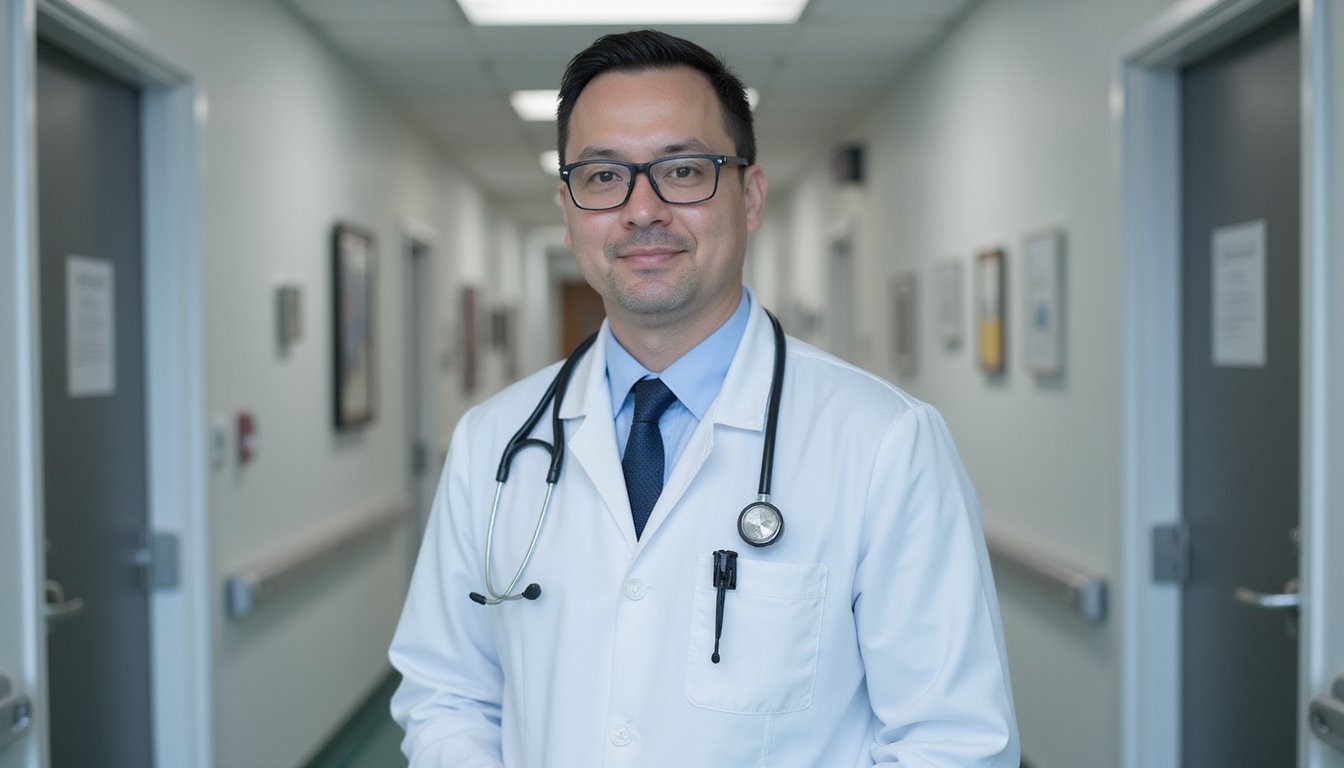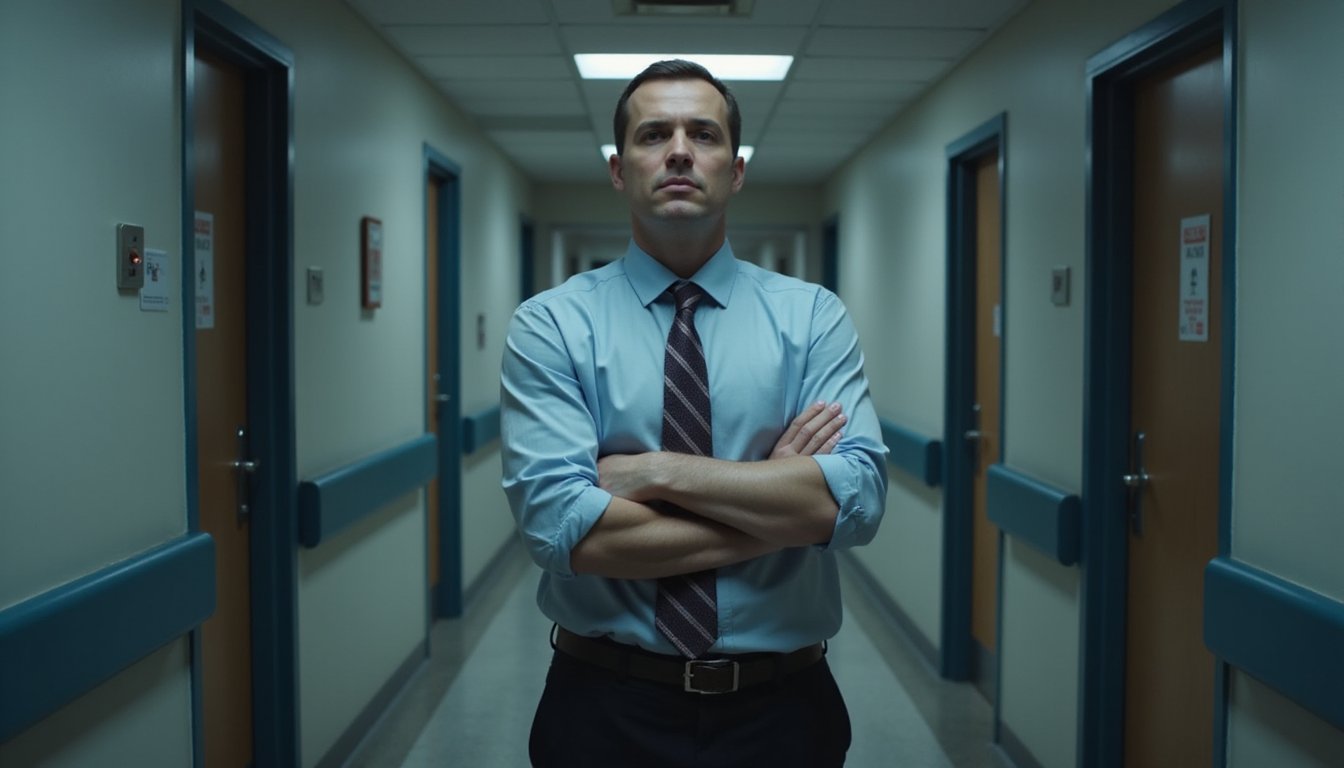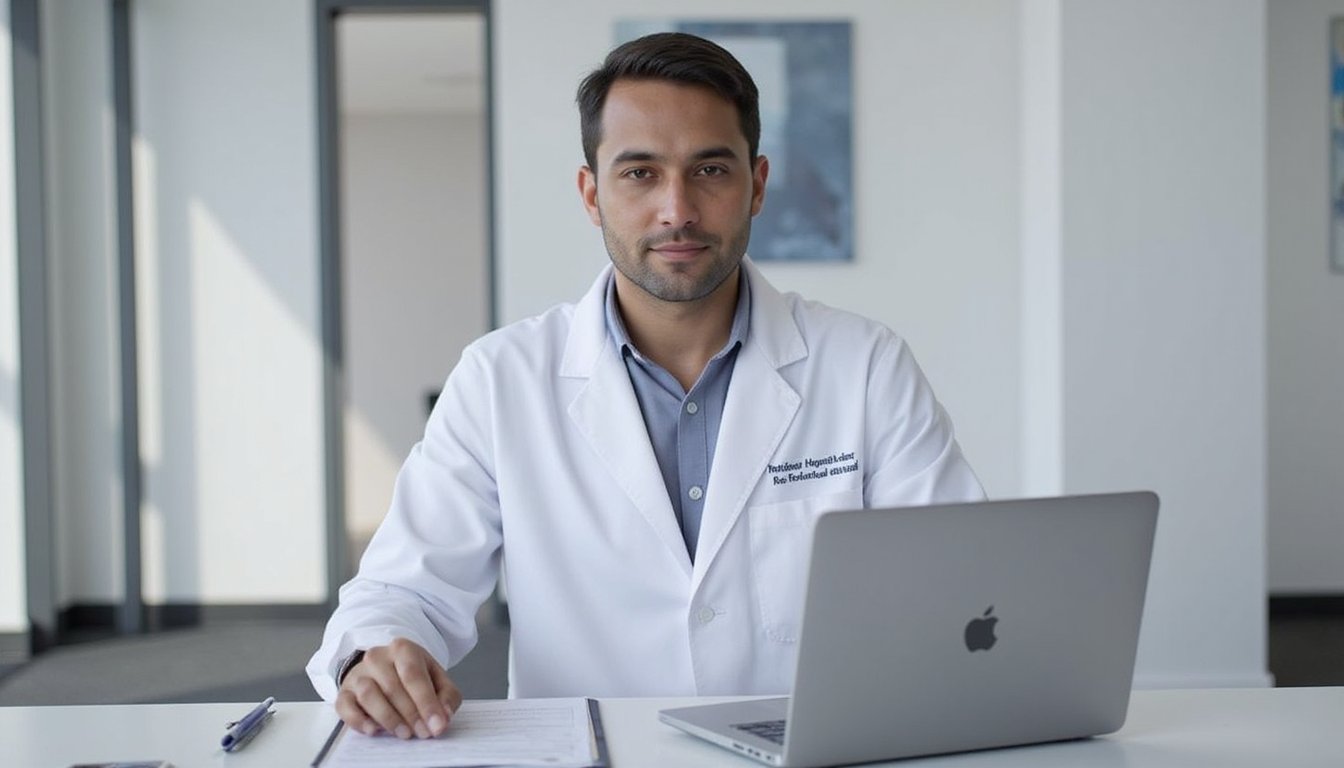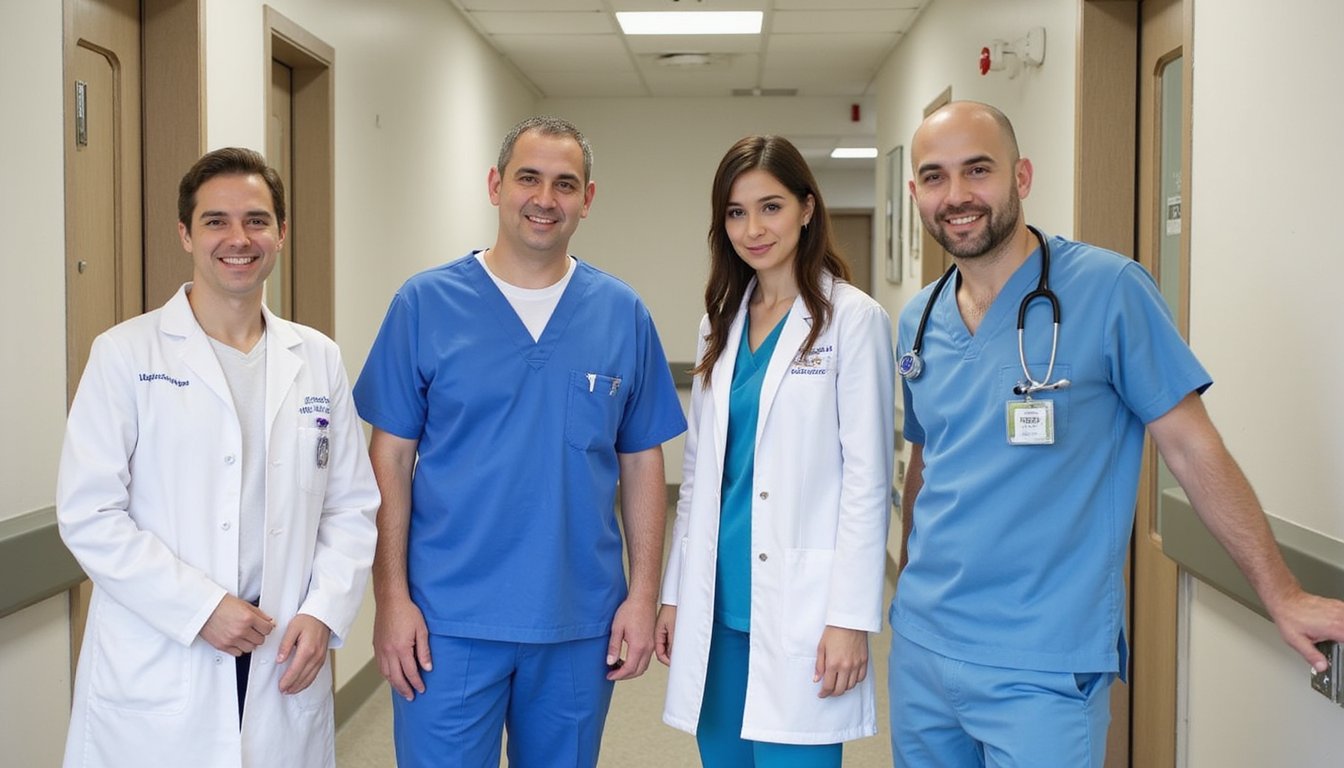Dubai’s healthcare system offers three tiers of beneficiaries. You’ll find UAE citizens receiving full public healthcare coverage with zero out-of-pocket costs and priority access. Private insurance holders benefit from extensive networks of 130+ facilities with annual copayments capped at 1,000 AED. Tech-savvy urban residents leverage AI-driven diagnostics and digital health platforms, accessing specialized care through telemedicine. Understanding these distinct advantage levels reveals the system’s strategic design for population-specific care delivery.
UAE Citizens’ Premium Access and Benefits
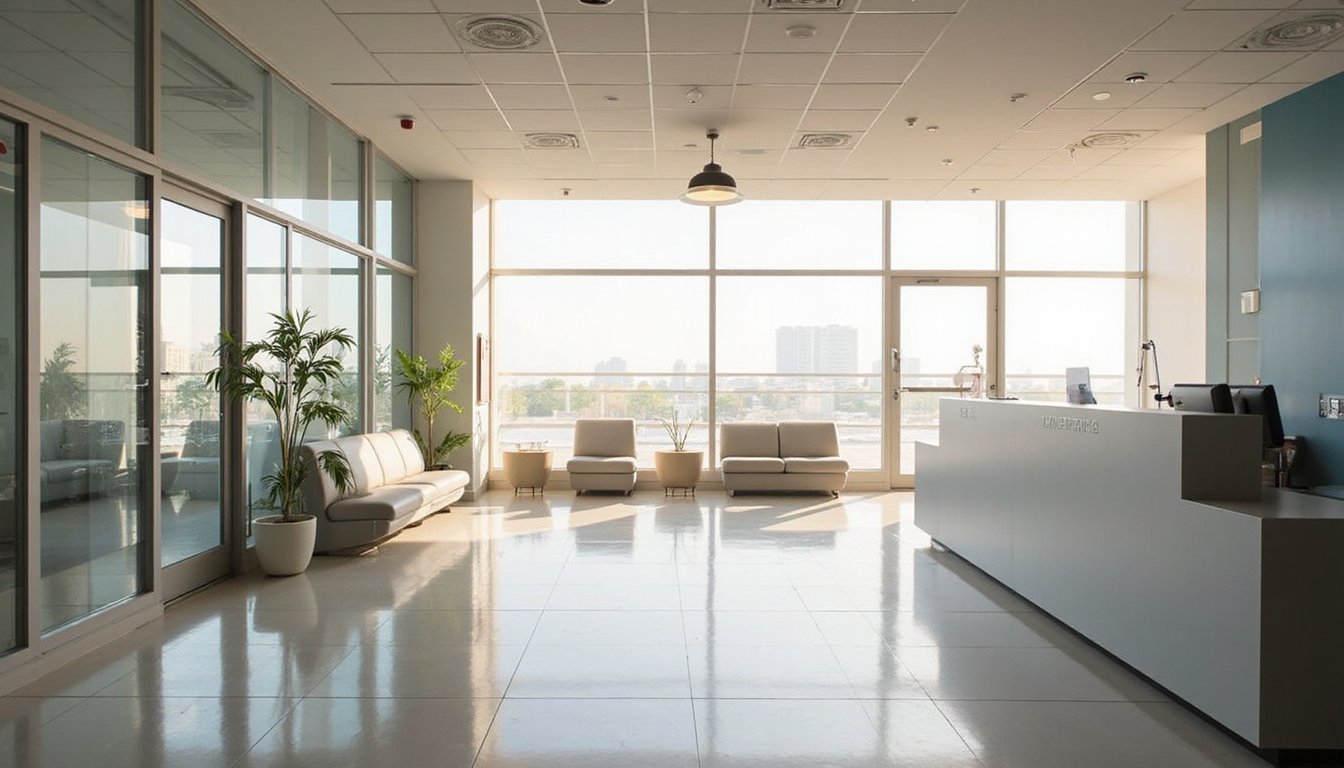
While healthcare regulations in Dubai mandate insurance coverage for all residents, UAE citizens receive premium benefits through the government-funded public healthcare system. As a citizen, you’ll access extensive medical services at DHA-managed facilities without out-of-pocket costs, unlike expats who face 20% copays. Healthcare quality remains consistently excellent with state-of-the-art equipment utilized across both public and private facilities. With only 15% of residents being Emirati citizens, the public healthcare system effectively serves this smaller population segment.
Your citizen healthcare benefits include full coverage for general examinations, diagnostic tests, prescribed medications, and physiotherapy. Public insurance automatically covers you through tax funding, eliminating the need for private insurance policies. You’ll receive immediate emergency care through public-sector ERs and specialized treatment units without cost barriers. The city’s rapid expansion includes plans for a 3-6% growth target in medical facilities to enhance access for citizens. The system also provides preventive services, maternal care, and high-standard facilities comparable to private sector care. Your status as a citizen guarantees priority access to medical services without annual coverage limits or financial restrictions.
Tech-Enabled Urban Healthcare Excellence
Dubai’s healthcare system extends beyond citizen benefits through its advanced technological infrastructure. You’ll find telehealth advancements transforming urban wellness through AI-driven diagnostics and smart hospital networks. Population growth of 3.9% annually drives the continuous expansion of digital health services. A projected spending of AED 151 billion by 2029 ensures sustained technological advancement in healthcare delivery. The integration of telehealth platforms is expected to generate AED 853 million in market value due to the region’s high internet connectivity.
Technology Impact on Urban Healthcare | Benefits
—|—
Digital Appointment Systems | 24/7 booking, reduced wait times
AI Health Assessments | Personalized preventive care plans
Smart Clinic Networks | Continuous care in high-density areas
You’ll experience streamlined healthcare delivery through mobile apps and IoT devices that enable real-time health monitoring. The system’s tech integration handles increased patient loads in densely populated areas through automated triage and predictive analytics. Dubai’s investment in telehealth infrastructure directly addresses outpatient room shortages while expanding access to specialized care. These technological solutions guarantee efficient healthcare delivery across urban communities, supported by government-funded R&D partnerships and robust digital health platforms.
Private Insurance Holders and Quality Care

Private health insurance revolutionized Dubai’s medical landscape, with mandatory coverage (ISAHD) reducing out-of-pocket expenses from over 20% to under 12% since 2012. You’ll find that insurance coverage now accounts for 47% of total healthcare expenditure, funding both hospital (49%) and clinic (28%) services. The Dubai health sector serves a population comprised of 92% expatriate residents.
If you’re an insured expat, you’ll have access to over 130 private facilities offering shorter wait times and specialized care. Your annual copayments are capped at 1,000 AED, notably improving healthcare affordability for both emergency and elective procedures. Private insurance allocates 21% of funds to pharmacies and 49% to outpatient care, ensuring you receive extensive treatment options. The healthcare sector has shown remarkable growth with a compound annual growth rate of 8%. While employers must cover expat workers, you’ll likely need additional international private health insurance for dependents to maintain complete family coverage.
Sovereign Investment Impact on Patient Care
Beyond private insurance coverage, sovereign wealth funds (SWFs) have transformed Dubai’s healthcare ecosystem through strategic investments. You’ll find their impact through healthcare partnerships that have enhanced local pharmaceutical manufacturing, reducing medicine costs and improving access to treatments. SWFs across the GCC region now manage near USD 4 trillion in assets that can be leveraged for healthcare advancement.
Through initiatives like ADQ’s Arcera and PIF’s Lifera, you’re benefiting from increased domestic drug production and shorter delivery timelines. The combined workforce of over 6,500 employees across these initiatives ensures robust pharmaceutical development and distribution networks. These sovereign wealth investments have also accelerated the development of AI-driven diagnostics and telemedicine platforms, making specialized care more accessible. Investment activity has shown significant concentration in healthcare, particularly through Singaporean funds. You’ll notice improved healthcare infrastructure powered by renewable energy, which has reduced operational costs at facilities. Additionally, SWF-backed healthtech startups are delivering innovative solutions for chronic disease management, particularly beneficial for the region’s specific health challenges.
Low-Income Support and Community Programs

You’ll find Dubai’s healthcare system has implemented extensive support for low-income residents through subsidized treatment programs, evidenced by minimal out-of-pocket spending (100.32 AED) among labor camp workers in 2018. Government initiatives have expanded community prevention resources, though utilization data indicates persistent access barriers for blue-collar workers despite financial coverage. The successful implementation of ISAHD led to a dramatic decrease in overall household out-of-pocket expenses from 25% to 13% between 2014-2017. Recent surveys show that 81% of residents report receiving very caring experiences from healthcare providers, demonstrating strong patient satisfaction with the quality of care delivered. With a rapidly growing population reaching 10.1 million by January 2022, the healthcare system has significantly increased its facilities and workforce to meet rising demands. Telemedicine services aim to bridge geographical gaps, yet data shows disparities continue between expatriates in households versus those in labor camps, suggesting a need for targeted interventions beyond financial assistance.
Subsidized Treatment Access Programs
Through Dubai’s extensive healthcare reforms, subsidized treatment access programs have greatly improved care affordability for low-income residents. You’ll find that out-of-pocket expenses dropped notably from 25% in 2014 to 12% in 2018, matching OECD standards and enhancing access equity across income levels. The success aligns with the country’s remarkable improvement in maternal mortality ratios, now at just 8 deaths per 100,000 live births. The emirate’s universal health insurance mandate has strengthened coverage accessibility for all Dubai residents.
| Funding Source | Amount (M AED) | % of Total |
|---|---|---|
| Government | 8,724 | 39% |
| Employers | 10,710 | 48% |
| Households | 2,890 | 13% |
The subsidized treatment framework has transformed healthcare utilization patterns, with 52% of spending now directed to hospitals and 23% to clinics. You’ll see this reflected in increased medical goods consumption among low-income groups, supported by government funding that reached 8,442M AED in 2023. The system’s efficiency focus guarantees sustainable access through strategic infrastructure investments in clinics and pharmacies.
Community Prevention Resources
Dubai’s community prevention resources complement its subsidized treatment programs with targeted outreach initiatives. You’ll find a robust network of Public Health Ambassadors driving community engagement through peer-based interactions, though coverage for non-Arabic speakers remains limited with only 49 trained English-speaking ambassadors.
The city’s health literacy efforts span 3,315 facilities, including 91 government centers that coordinate vaccination campaigns and preventive screenings. While private facilities dominate healthcare delivery, public-private partnerships extend community outreach through workplace wellness programs and school-based interventions. These initiatives particularly target chronic diseases, which account for over 25% of UAE deaths, and injury prevention, responsible for 17% of mortality. However, language barriers and accessibility challenges persist for low-income expatriate populations requiring specialized community health worker support.
Telemedicine For Rural Areas
Telemedicine initiatives across the UAE’s rural regions have transformed healthcare accessibility, particularly benefiting low-income populations. You’ll find that telehealth accessibility has bridged critical gaps, with mHealth platforms leveraging the UAE’s high smartphone penetration to bypass infrastructure limitations.
Rural healthcare delivery has improved through:
- Remote consultations reducing travel burdens, with a 40% surge in telemedicine usage in Sharjah driven by elderly populations needing homecare
- Mobile health solutions reaching 50% of smartphone users in Ajman and Fujairah
- Public-private partnerships enabling cost-effective expansion in resource-limited regions, achieving 25% telemedicine penetration in RAK and UAQ
This digital transformation addresses regional disparities while supporting chronic disease management through regular remote monitoring, especially benefiting diabetes and cardiovascular patients in underserved areas.
Public-Private Healthcare Integration
While many healthcare systems struggle with sector coordination, Dubai has achieved remarkable integration between public and private healthcare providers, evidenced by its 98% coverage rate and AED 9.7B in private sector expenditure.
Public private partnerships have revolutionized Dubai’s healthcare delivery through innovative solutions like AI-driven triage and digital diagnostics. You’ll find the system’s efficiency enhanced by the ISAHD platform, which standardizes care quality across both sectors. Private insurers contribute 60% of healthcare expenditure, while government funding of AED 6.5B guarantees affordability for non-affluent patients.
The integration’s success is further demonstrated through DHA’s streamlined licensing processes, thorough electronic medical records, and PPP-driven infrastructure upgrades. This coordination enables specialized care delivery through facilities like DHCC’s 200+ clinics, serving both locals and medical tourists effectively.
Digital Healthcare Transformation Winners
As digital transformation reshapes healthcare delivery, five key stakeholder groups have emerged as primary beneficiaries in Dubai’s tech-driven medical ecosystem. You’ll find healthcare providers leveraging AI solutions and digital diagnostics to reduce errors while streamlining operations through blockchain-enabled systems.
Key beneficiaries are experiencing quantifiable advantages:
- Medical institutions see enhanced efficiency through automated pharmacy systems and cross-institutional data sharing
- Rural patients (12.22% of residents) gain improved access via telemedicine and 24/7 virtual consultations
- Healthcare leaders develop strategic capabilities through UCL’s executive education focusing on GCC-specific implementation
With 8.5% annual growth in healthcare spending, you’re witnessing a robust ecosystem where the DHA’s e-health strategy drives continued innovation, particularly benefiting those adopting AI-powered solutions and blockchain technologies for secure medical records.
Frequently Asked Questions
How Do Medical Tourists Access Dubai’s Healthcare System Without Residency?
You can access Dubai’s healthcare system through DXH partnerships that provide extensive medical visa assistance and healthcare packages. You’ll work with travel facilitators who coordinate your visa processing, accommodations, and medical appointments. You can initiate your journey through virtual consultations for pre-visit evaluations, while blockchain technology guarantees your health records remain secure and portable. Digital platforms help you book appointments and manage treatment plans seamlessly.
What Mental Health Services Are Available Across Different Healthcare Access Groups?
You’ll find Dubai’s mental health service accessibility varies by population group. If you’re an Emirati citizen, you have priority access to JCI-accredited facilities like Al Amal Hospital, offering extensive outpatient services and specialized programs. For private insurance holders, you can directly access multilingual psychologists and advanced therapies like CBT. People of determination and elderly populations receive dedicated clinical support, while teletherapy options provide flexible access across all groups.
Can Patients Choose Doctors Across Public and Private Healthcare Networks?
Your doctor preferences and healthcare access options depend on your residency status and insurance coverage. If you’re an Emirati citizen, you’ll primarily access doctors within the public system, with some flexibility for private referrals through integrated platforms like Riayati. As an expat, you’re mainly restricted to private network physicians based on your insurance plan. However, digital health platforms connecting 3,057 facilities enable cross-network referrals when medically necessary.
How Are Emergency Medical Services Coordinated Between Rural and Urban Facilities?
Dubai’s emergency services achieve rural coordination through a centralized system that connects urban response networks with outlying areas. You’ll find that the 999 emergency number streamlines dispatch across all regions, while the National Ambulance Integration guarantees seamless coverage. Air ambulances and mobile ICUs extend services to remote locations, and DHA’s Emergency Operations Plan maintains standardized protocols. Mutual aid agreements between facilities optimize resource sharing and patient transfers between rural and urban centers.
What Healthcare Options Exist for Visitors With Pre-Existing Conditions?
If you have pre-existing conditions while visiting Dubai, you’ll need to carefully evaluate your insurance coverage options. You can access private international insurers like William Russell, though they may require health clearance. You’ll face upfront payments without insurance, and treatment availability varies. The Basic Health Insurance Package (AED 320/year) won’t cover most pre-existing conditions. Consider specialized travel insurance that explicitly includes your condition or offers a waiting period before activation.
